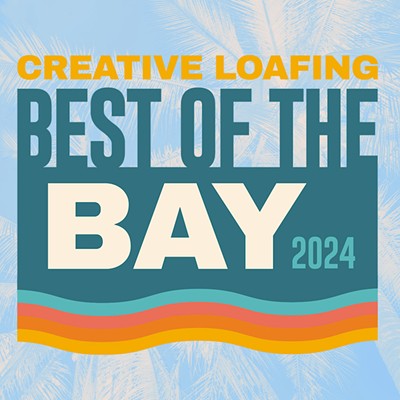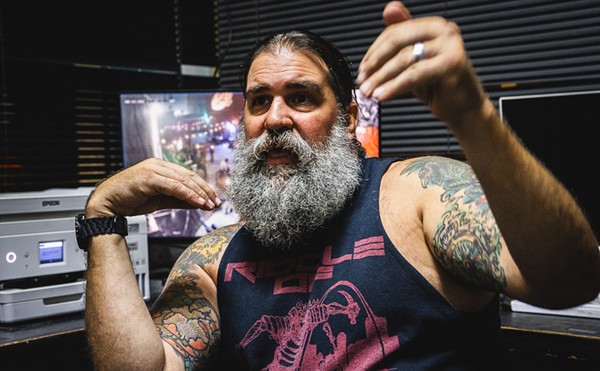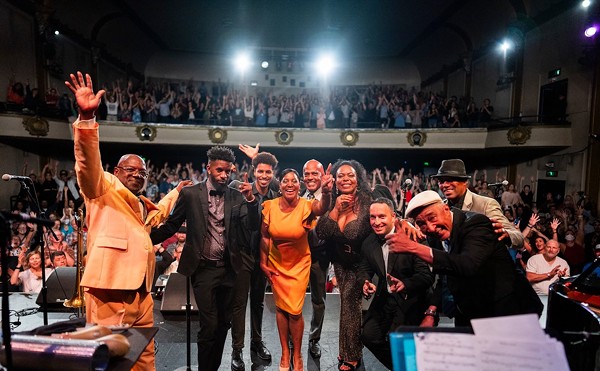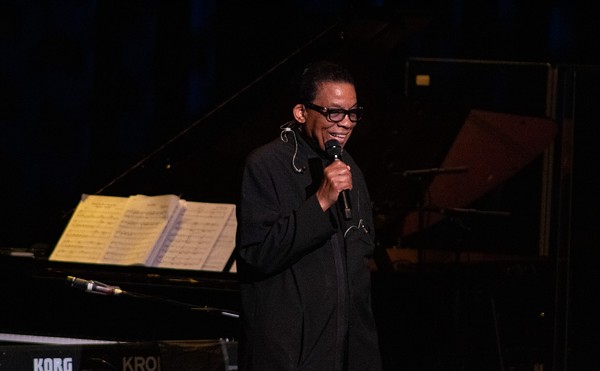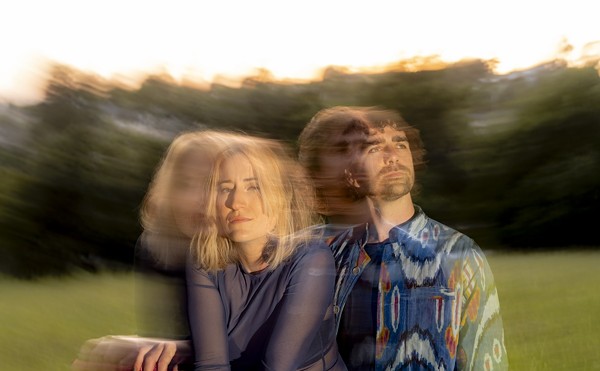Tampa had the pleasure of seeing Cimafunk’s excellent show in 2022 he supported his second album El Alimento, which was Nominated for a Best Latin Rock or Alternative Album Grammy. On that run, he participated in Gasparilla Music Festival (GMF), where he left everyone in awe and wanting more. That festival set led to a show at Ybor City’s Cuban Club eight months later—and now Cimafunk is on the way back to the historic district this weekend. His band La Tribu and the Hijas del Cacao horn section will be onstage, too.
El Alimento sent Cimafunk to the moon, making Sir Paul McCartney dance as he enjoyed his presentation at SXSW. In February 2024, he participated in the White House tribute to Afro-Latino heritage in the United States.
A new album Pa’Tu Cuerpa was released in August. The record’s collaboration with the Colombian group Monsieur Periné “Catalina” is nominated for Song of the Year at next month’s Latin Grammys. The album also includes collaborations with Francisco “Poncho” Céspedes, Gonzalo Rubalcaba, Camila Guevara, George Clinton, Big Freedia, Trombone Shorty, Nik West, Wampi among others.
Tickets to see Cimafunk play Crowbar in Ybor City on Sunday, Oct. 6 are still available and start at $30.
Read our Q&A—conducted in Spanish, but translated for English-speaking readers—below. Listen to this conversation on Wednesday, Oct. 2, on WMNF Tampa 88.5-FM's LatinX program.
How do you come to create this synergism of funk with Latin flow that highlights your music?
In large part, because of the cimarron self-sufficient thing—when I started to identify with what the cimarron is, it was always like trying to go to a different place in all aspects. Like trying to think for myself, trying to act and decide for myself and that happened to me alot with music when I started producing my songs. It was a time when the genres were quite diverse in Cuba happening in the street music sphere. There was a lot of reggaeton, there was a lot of folk, there was a lot of timba, which is like what is called salsa here and I was trying to find something that had to do with me. And little by little I knew that I didn't want to do something that everyone else was doing and that's when “fukutu” I started experimenting.
When Terapia [Cimafunk’s debut album, released 2017] came out, I realized that yes, these are songs that everyone has a way of explaining. And there, I gradually got into funk, which I always loved. The other part, which is Afro-Cuban music, well we have that inside. That's inside and every time a song is going to be made, the key or poison always comes out, one of those Afro-Cuban evils always comes to the surface. So, when I started mixing funk with American genres, soul with a little blues and R&B, this amazing thing started to come out. The album El Alimento has a lot of hip-hop “hues,” a lot of hip-hop bass, so experimenting but reaching a point where you know, you identify with a texture and that's where I find myself now. Giving it that path that I started unconsciously and that is now more grounded.
How is Pa’tu Cuerpa created? What is the vision of Pa’Tu Cuerpa?
This album is actually largely the result of being on the road touring, this is the first album I've worked on while on tour. Many of the songs were recorded in different places. The song with George Clinton, for example, was in New Orleans and worked on in New Zealand, and the ending was in a different place. The song with Wampi was on the road, “Catalina” was recorded in Miami. As this album has a lot of live feel music, it was created as the concerts ended and the other day in the studio, I was in the hotel making a song. I was trying to bring that feeling that people get from a live performance. When people come to the live shows, regardless of where we are playing and regardless of the culture, when we start playing the second song, people jam, everyone forgets where they come from, they forget what they are and the body becomes flesh.
That's what I'm seeing from the stage, a bunch of dancing bodies moving with the groove and the rhythm. That is why we were trying to find something that has to do with flesh to name the album, but without having that word. Then, I remembered that “cuerpa” is a word that I have been using since I started making music and especially for live music and that's what the name Pa'Tu Cuerpa is about—that feeling that the groove gives you that disinhibits you and turns you into a piece of dough. You go down to the basic, you go down to instinct, you don't care if you know how to dance or not, where you come from, it doesn't matter, is a moment where you love and are part of the groove and that trivial moment is repeated over and over again, that's what you can see of the show from the stage. This is my favorite part and the album has it.
For the most part it has been a joy to always connect with all the artists. Because collaboration is always something that I really liked. Being able to travel is good because you can collaborate. “Oh such and such is here, you are here, oh well let's go to the studio” and the collaborations are made. With Monsieur Perine it was that “Catalina” was in Miami and also at that moment Faux, who is a producer, a brother, we went into the studio and cooked “Catalina” in a few hours. Then we sent it to Santiago and Monsieur Perine's boys in Colombia and Santiago put the guitar in it and sent it back. Foux closed it and so on. It was rich because that feeling was captured in this album.
With this album is there something that was your best step in personal growth?
Ugh, a lot, for example this album because it was done on the road, for example when choosing the songs, there were so many and choosing the ones that fit was difficult. Make sure you have the resources for production and be satisfied with how it sounds, since I was not in the studio but working on the laptop, sometimes you doubt if you have the right sound, if it is powerful enough and above all that it will make the song sound right. This album was like that.
For example, the song with Francisco “Pancho” Céspedes, Gonzalo Rubalcaba, Camila Guevara, which is the last track on the album “A tu Merced” I wrote more than 10 years ago. When I wrote it I was specifically thinking about trying to get it to Pancho Cespedes. At that time I didn't know anyone, but if you listen to the song you will hear that the melodic movements it has were trying to match Pancho's melodic movements, trying to get it to him so he could sing it. I never sang that song and now working on this album and with those doubts about production quality, I went down to earth level and looked for those songs that I had never done anything with. “A Tu Merce” appeared and I sent it to Pancho.
Pancho and I have been friends now for a few years, I consider him a mentor. I told him that I had written the song for him a long time ago and he immediately loved the song and the result of going back to the beginning of how this is to be enjoyed. It is not to torment yourself, nor to worry, it is to have a good time. Music is a gift, and dedicating yourself and living it is fortunate and a blessing because it is rich and sometimes we forget. That is what brought me back to this notion of the body in motion. Each album project is an opportunity to learn and grow and is to enjoy!
It speaks volumes about the quality of each artist's work to be able to record a project on the road in multiple places and have a synergistic result that connects with the audience as if you were there live. That you let yourself be carried away by the flow. In this album you will find this very sexy “Cima,” very flirtatious and passionate and a party-goer with high energy dancing.
Readers are invited to submit their own events to Creative Loafing Tampa Bay’s things to do calendar.
Subscribe to Creative Loafing newsletters.
Follow us: Google News | NewsBreak | Reddit | Instagram | Facebook | Twitter





